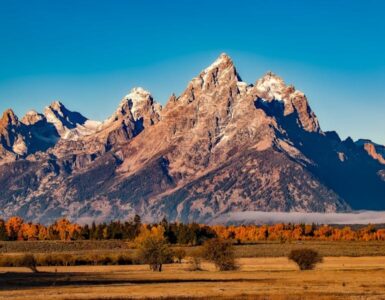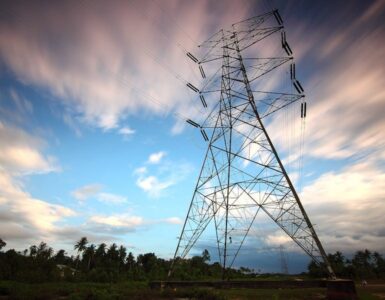In Arizona where the state flower is a cactus blossom, water officials have long planned for and staved off shortages. But Mother Nature is fickle. New projections show they are coming sooner than expected.
The state’s two top managers of Arizona’s share of the Colorado River – one with a long history in water management and the other in finance and operations – are chairing a statewide steering committee to quickly adjust an outdated drought contingency plan.
A standoff between the two over how to store Colorado River water in Lake Mead stalled negotiations last year. Now, things are back on track to avert crisis. There is a 52 percent chance of the state’s first ‘tier 1’ shortage in 2020, and a 60 percent chance in the following three years.
Most residents and businesses won’t see much of an effect. Most concerned are home builders and developers who are limited in how much groundwater they can use, and centrally located agricultural users like Pinal County farmers who receive Central Arizona Project (CAP) water that is diverted from the Colorado River into central Arizona.
The two managers, Tom Buschatzke, director of the Arizona Department of Water Resources, and Ted Cooke, General Manager of the CAP need to move quickly to get a finalized contingency plan to take to the state Legislature by January. If they fail, the U.S. Department of Interior has warned of a takeover.
The committee’s success is vital to the state’s economic growth and development. Chamber Business News spoke to both about what’s ahead.
Q&A: Arizona water managers Tom Buschatzke and Ted Cooke
Is Arizona having a water shortage right now?
Cooke: No. A shortage happens if Lake Mead drops below the elevation of 1075 feet above sea level. It’s hovering there. But if it’s not at that level at the end of the year, we’re not in shortage.
What happens if there is a shortage?
Buschatzke: A Tier 1 shortage is declared when, in August, Lake Mead is forecasted to be below 1075 feet at the end of that calendar year. If in shortage, Arizona takes a reduction of 320,000 acre-feet from its 2.8 million acre-foot annual allocation. For each tier level the lake drops, additional cuts are triggered.
Will water shortages cause rate increases and shortages?
Cooke: Rates will increase for some users under the 2007 guidelines (for water sharing) that are already in place and will increase more under the drought contingency plan because we’re delivering less water and that’s what causes the rates to go up. The fixed portion of the rates will increase between 10 and 25 percent under the 2007 Guidelines and another 20-30 percent under DCP.
The fixed portion of the rates will increase between 10 and 25% under the 2007 Guidelines and another 20-30% under DCP. When including the portion of the rate that will not fluctuate with deliveries, rates will increase between 7-17% under the 2007 Guidelines and an additional 13-20% under DCP.
Why was a statewide steering committee formed to draw up a plan for the legislature to approve?
Buschatzke: The drought contingency plan (DCP) has been negotiated for the most part with Arizona interests, California, Nevada, Mexico and the U.S. Bureau of Reclamation to help protect Lake Mead from dropping to critical levels. The Director of the Department of Water Resources needs legislative approval to sign off on the DCP. Several intra-Arizona issues need to be worked out before a workable proposal can be taken to the legislature.
Under the proposed drought contingency plan, additional reductions would be in effect. For example, when Lake Mead is projected to be above 1,045 feet and at or below 1,090 feet at the end of that calendar year, Arizona would take an additional reduction of 192,000 acre-feet. The DCP proposes sharing of reductions among California, Nevada, Arizona and the United States while still honoring previous agreements.
Homebuilders and developers are concerned about potential water shortages along the Arizona Sun Corridor from Phoenix to Tucson. Does the contingency plan address this?
Buschatzke: No. From a water supply and growth standpoint, certain individual water providers, water companies, and municipalities all have different water resource portfolios. To the extent they will be able to grow out in the future is contingent on how they want to use their own water portfolios. That’s not really something that’s going to be standardized. They have their own economic goals so it’s a pretty localized decision-making formula.
What are some of the proposals under consideration for shoring up Lake Mead?
Cooke: Under a series of other agreements, Arizona and CAP have already been reducing consumption of Colorado River water that is equivalent to what we would be required under the DCP. We’ve been making contributions to the lake as if the DCP is in place. It’s allowing us to practice.
Another type of change would be to allow for some water users to receive monetary compensation or credits to temporarily leave their water in the lake rather than using it or storing it elsewhere. Some of the funding could come from tax dollars.
There are 38 members on the steering committee representing different water interests across the state. Are you confident they can find a resolution by January?
Buschatzke: In the past, Arizona was known for its water community coming together to address problems. We faced challenges and hard problems. We’re good at doing this and we’re facing another challenge and we’ll move forward collectively.
















Good reporting on water.